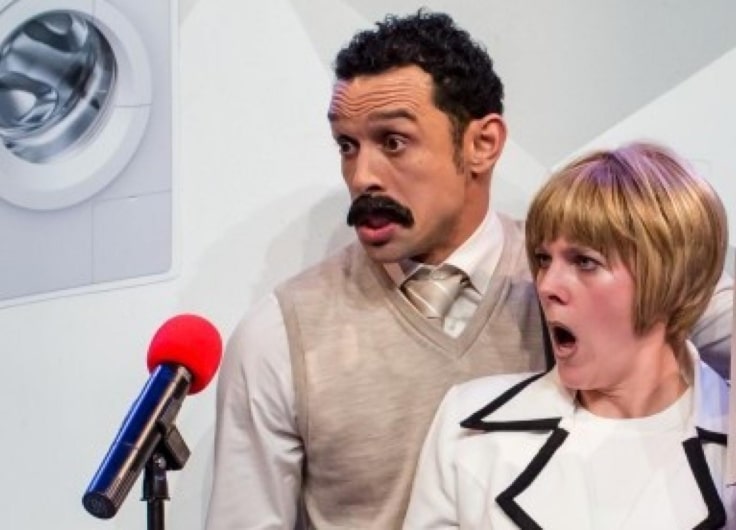Big Issues for Young People: Maas Theater and Dance
Rotterdam-based Maas Theater and Dance, the only Dutch youth theatre company with its very own playhouse and programming, is known for staging extraordinary productions. Their performances are aimed at young people, but equally at adults who are willing to let their inner child come out and play.
If theatre weren’t the most beautiful of lies, what child would want to believe in it? A child that can make itself invisible to the outside world by simply closing its eyes, that can imagine what it is like to communicate with dolls, that is able to trust a bishop who comes bearing gifts. Just imagine the absolute goldmine buried in the soul of a child with the ability to let the magic of the theatre thrive.

@ Maas Theater and Dance
Theatre aimed at children and teenagers that succeeds in exploiting that potential does what it needs to do, i.e. providing fertile ground for today’s youth to experience art, to explore beauty and find solace. A jewel in the crown of Dutch theatre for our youngest generation is Rotterdam-based Maas Theater and Dance. About five years ago, this company was born – mainly for financial reasons – out of three existing companies: dancing troupe Meekers and theatre groups Max. and Siberia. The three of them joined forces back in 2013, and moved into their home, which has been named Maaspodium (Maas stage) in the meantime, although it had once started out as the Onafhankelijk Toneel, the theatre company that, after forty years, was forced to call it quits on 1 January 2013, as funding was cut.
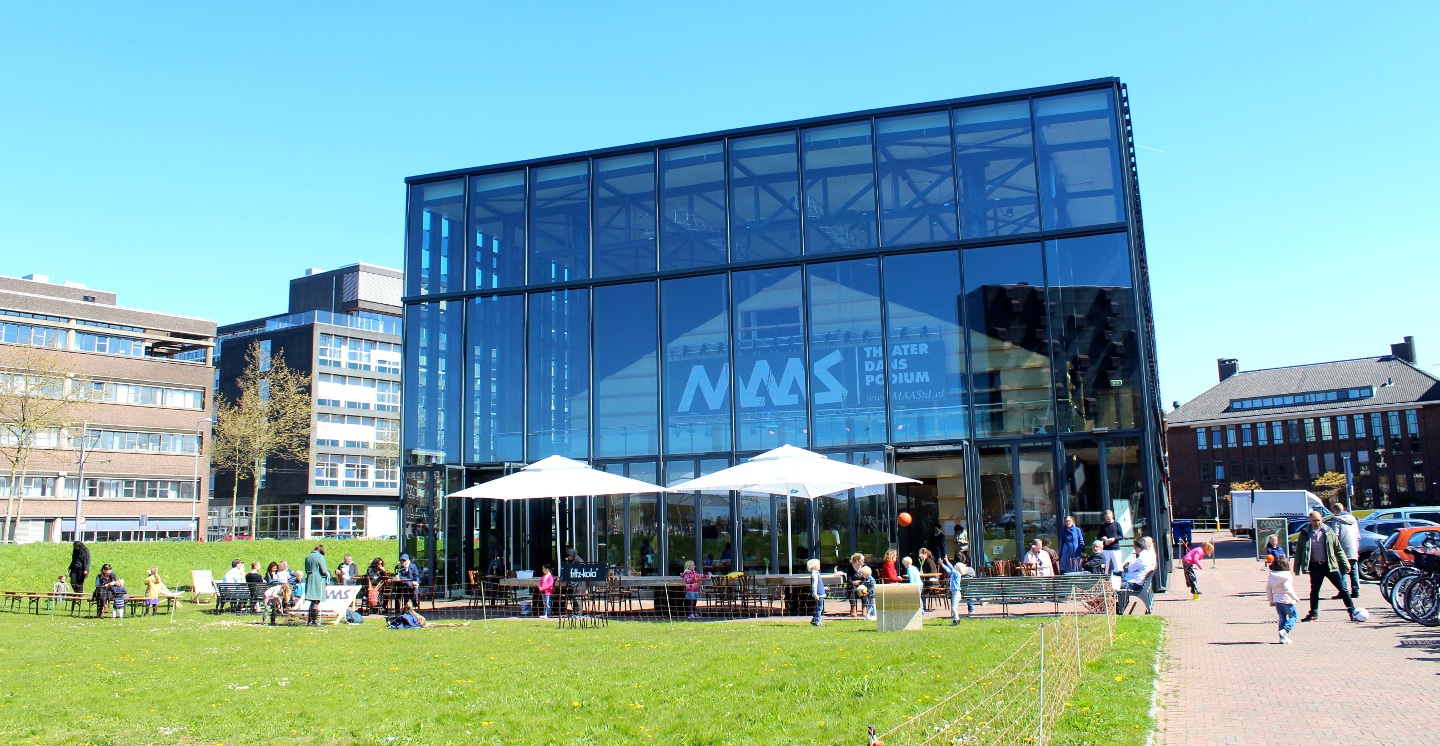 The Maaspodium, home of Maas Theater and Dance in Rotterdam
The Maaspodium, home of Maas Theater and Dance in Rotterdam© Lisanne Jacobs
Former Onafhankelijk Toneel aficionados, of which I admit I am one, are still struggling to deal with the loss of funding and the annexation of the theatre by Maas. However; one must admit that the fusion company’s high-quality output, and the intensity with which that exquisite stage located in the Lloyd Quarter – close to the Euromast and the Maastunnel, is being used makes up for it, and then some. Moreover, Maas is the only youth theatre company in the whole of the Netherlands with its very own theatre and programming; quite a prestigious position to be in, which leads to a continuous battle with policy makers as well as investors.
Although in the past, I used to follow what Maas was up to from afar, and – admittedly – I have been paying closer attention these last couple of months, I have to surrender: this company puts on high-quality performances, not just aimed at young people, but also targeted at those ‘grown-ups’ willing to let their inner child roam free. In order to paint a complete picture of the Maas method and their true nature, I would like to take this opportunity to present you a few of their most recent productions.
Beautifully directed chaos
The play Maas put on to celebrate their five-year anniversary can be labelled ‘extra-large’, i.e. theatre that is simultaneously aimed at adults and youngsters. The performance is entitled FEEST, or PARTY – that’s right: in capitals -, not so much to underline its cheery mood, but more because over the course of the play the party does not seem to get going, and in an attempt to compensate for that lack of joy capital letters are used. The play’s title itself encompasses both tension and conflict, ingredients that have historically been part and parcel of the theatre.
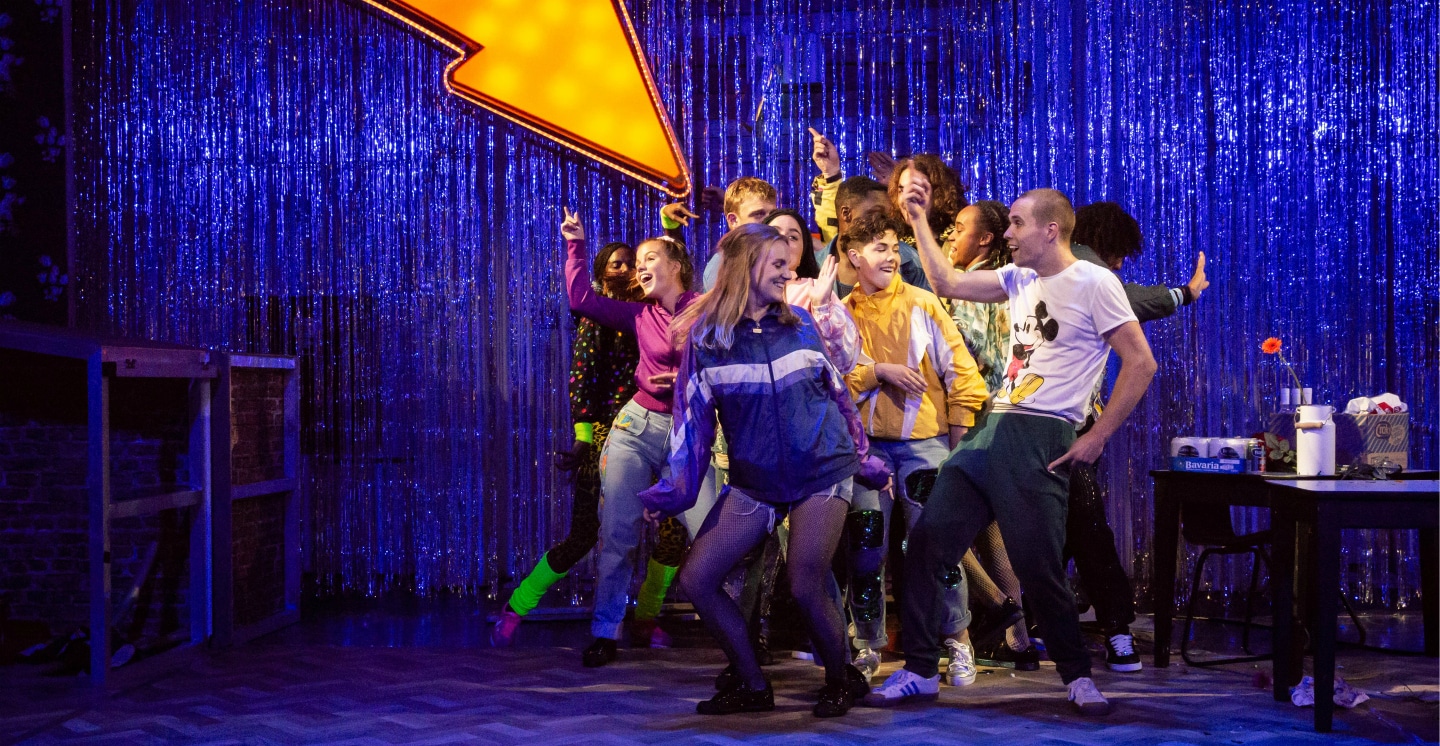 'FEEST' by Maas Theater and Dance
'FEEST' by Maas Theater and Dance© Nichon Glerum
FEEST
is definitely pleasing to the ear and eye, if only because of the extraordinary mix of acting, dance, music, and – not in the least – acrobatics. It is clear from the outset that the physical aspect dominates the psychological elements in this beautifully directed chaos, which could remind you in some ways of the film Trainspotting and Lodewijk de Boers’ The Family, a legendary performance that was a source of inspiration for head of artistic programmes and director Moniek Merkx. Conga lines and party hats do not set the tone at this party, whereas fights and weapons do. The mood, however, is extremely stylised, and an agreeable amount of irony sets the tone. Lastly, we should not forget the contributions of a six-member troupe of actors, accompanied by ten students of acting in secondary vocational school, as well as a group of wisecracking children.
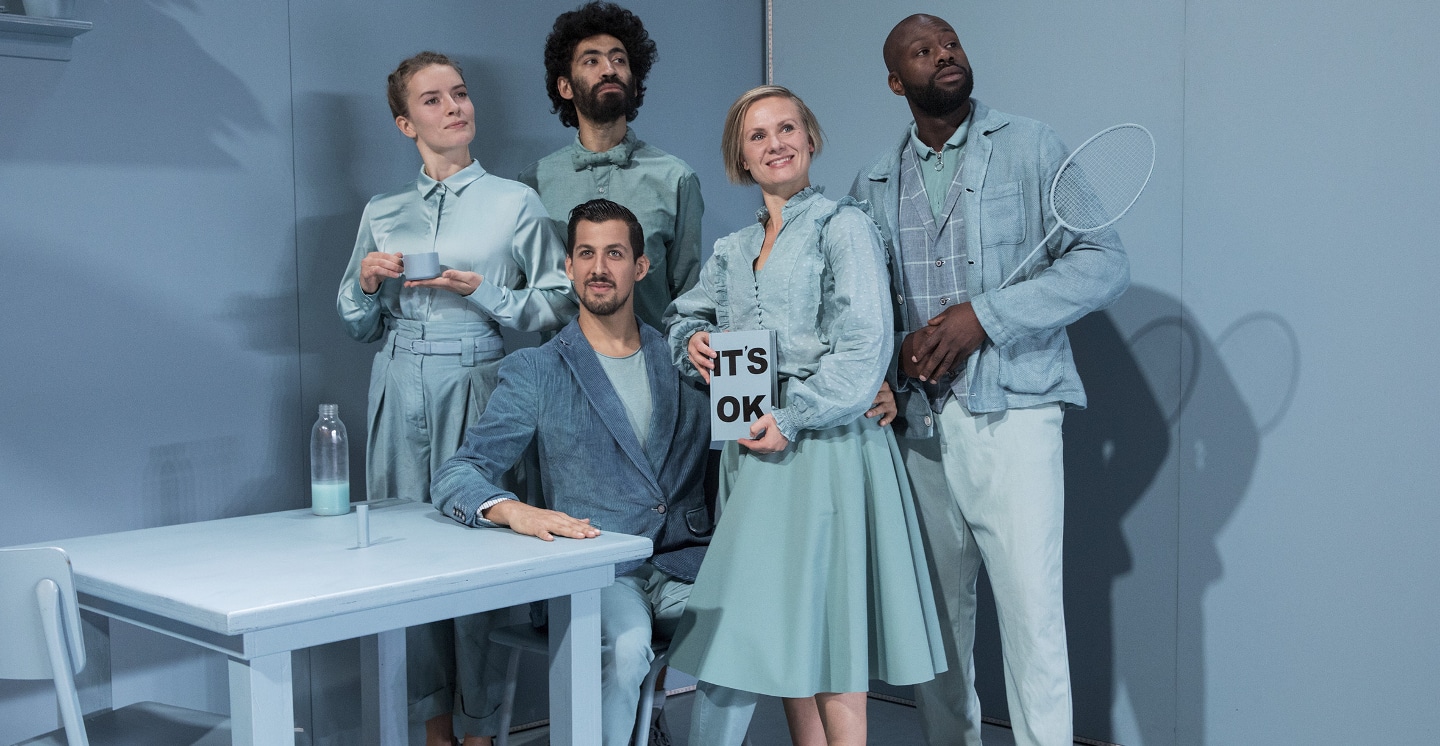 'Victory' by Maas Theater and Dance
'Victory' by Maas Theater and Dance©PhileDeprez
Victory
is another one of those XL-productions. This dance performance apparently wants to become a part of the current educational trend advocating the right to fail. Nowadays, the courage to fail, i.e. “failability”,
is considered an important competence in a stimulating learning environment. Victory, conceived and directed by Cecilia Moisio, attempts to convert those “quintessential symptoms of failure” into movement, and actually succeeds in part. Indeed, we witness four performers and a musician’s virtuoso performance of stumbles, falls and slips. Victory falls short, however, as it never becomes anything other than a visually appealing circus act.
Video footage of performers addressing the audience – in English – is introduced in an attempt to compensate for that shortcoming with additional content, thus providing this abstract piece with the context it was intended to have. Nevertheless, apart from the fact that the language we hear is English, articulation is poor, and the text itself is rather formulaic. The words are far removed from the dance part, and both components never seem to be able to merge in order to add an additional layer of meaning to the piece. What remains is a pleasant visual and musical performance, which is low on expressiveness and goes on for just a little too long.
Magical illusions
We started this article off with the idea of theatre as a sublimated type of lying. It is precisely that notion which is completely embodied by – as the title suggests – De jokkebrokker (The fibber). This performance is aimed at children aged six and over, and deals at a conceptual level with what counts as a lie and what counts as truth as well. A magician by the name of Monsieur Fantastique Liegenie earns his gold-digging power-hungry impresario good money, yet tends to embarrass his young daughter: Can her father’s lying and cheating be considered proper behaviour?
De jokkebrokker
sends out a clear message: the play offers children the opportunity to contemplate the concepts of truth and lie, fact and fiction, real and fake. In the age of Trump, this topic is obviously of vital importance, and there is no harm in confronting children with the basic principles of this (word) game at the earliest possible age. Various side events are targeting the children’s parents: How do they cope with the truth, which lies are functional, and which ones are potentially damaging? In short, this performance is relevant because of the questions it raises, but is equally delightful because of the three actors’ interactions on stage, and the magical illusions that remain enticing despite the protest being offered.
A personal highlight during my already delightful stay in the Maas universe would have to be ChitChat, a “moving sound poem” aimed at children aged four and over, which was produced in collaboration with the Antwerp-based artist collective Tuning People. Charlotte Goesaert and Karolien Verlinden choreographed their own virtuoso dance duet, bringing a huge smile to your face for nearly an hour. The repeated movement patterns, the piece’s brilliant sense of timing and infectious level of energy: it all makes perfect sense. Moreover, Joost Maaskant’ ingenious sound mix helps merge sound and movement into a completely harmonious entity.
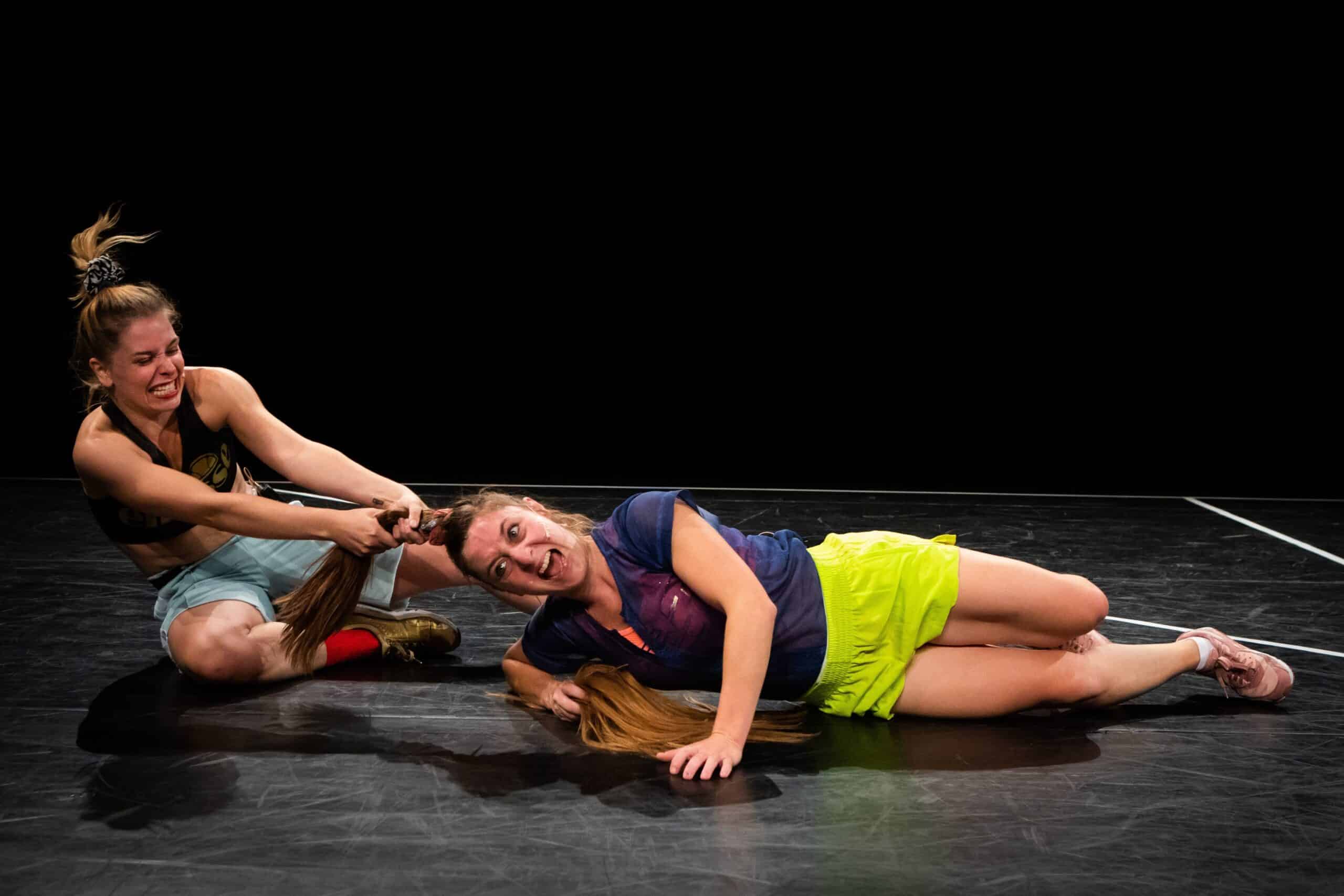 ChitChat by Maas Theater and Dance and Tuning People
ChitChat by Maas Theater and Dance and Tuning People© Clara Hermans
On the one hand, the youthful dancers seem to collaborate, whereas, on the other hand, they appear to fight. At times, they come across as the best of friends, at different times, they become each other’s arch nemeses. Their choreography seems to mirror real-world social life, in which everything usually goes off without a hitch, although sometimes obstacles need to be overcome. The children who were sat in the theatre seemed to pick up on these echoes of reality, as exemplified by their rather instantaneous and disarming reactions to the performance. Though ‘Chit-chat’ refers to informal talk about trivial matters, as a title for this particular dance performance the word rather evokes the contradictions, i.e. kind versus angry, gentle versus wild, compliant versus insurgent, which lie at its basis. Fortunately, everything works out in the end, and the dancers stand unified when taking their bow.
Big issues
The above-mentioned titles are but a lovely little selection from a wealth of performances Maas has been treating audiences from all ages to for over five years now. The company’s aim is, as was mentioned in the foundation act at the time, “to allow young people to discover ‘professional’ theatre, and hence themselves and the world.” A look back at the theatre group’s brief history proves that it has largely met that particular criterion. Partnering up with and hosting other theatre companies and producers, organising numerous workshops dealing with various genres, giving performances in (vocational) schools and during festivals, collaborating with less obvious organisations such as judicial institutions, all the while adhering to a clear definition of ‘diversity’: let it be understood, Maas Theater and Dance encompasses all of this.
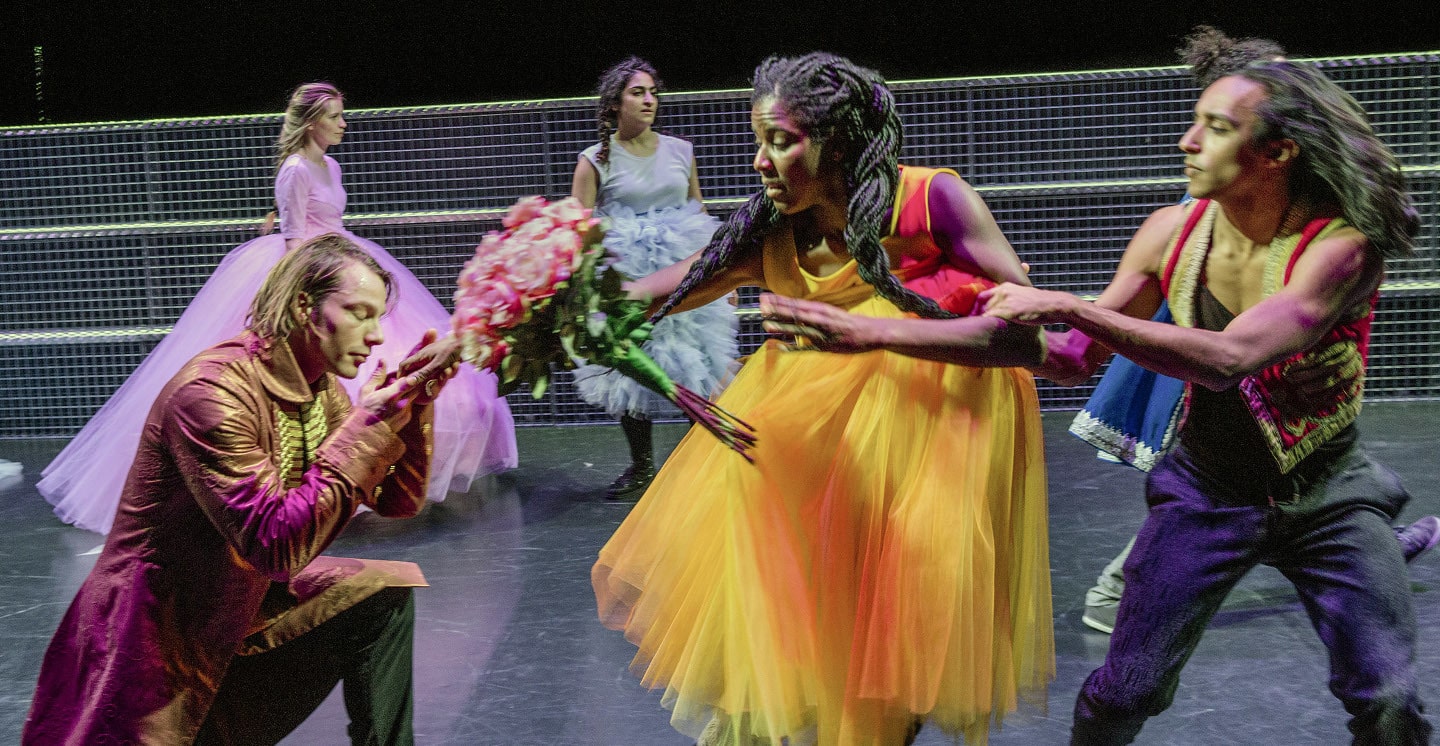 'Liefde' by Maas Theater and Dance
'Liefde' by Maas Theater and Dance© Phile Deprez
When Maas’ Liefde
(Love) was awarded with the Gouden Krekel (Golden Cricket) in 2017 for most impressive youth theatre production, head of artistic programmes Moniek Merkx commented in an interview, “This award confirms that we make things that do not just appeal to us, but are also appreciated out in the field.” She continued, “At the outset of this art scheme I have stated I intended to tackle the big issues. I decided to deal with love first. And there are many more of those issues on my list, including death, heroism and family.”
With a little imagination, based on recent Maas-productions, you could say they have kept that promise. Clearly, Merkx, who has been a director and playwright for over thirty years, has even bigger dreams. In an interview not long ago she said, “There is so much left to be done. We are still in the process of breeding an audience – at least, that is how I see it. Hopefully, over time, a youth population that appreciates art will arise.”
If it were down to me, I can hardly imagine a more noble objective than the one described by Merkx. Those of you, who, like me, occasionally find themselves in a theatre or a museum, can see for themselves how rapidly audiences are ageing. Of course, this is partly related to the current demographic trend, but also comes down to a lack of what Moniek Merkx calls “a solid art-loving youth base”. The way in which Maas is trying to find a solution to this deficit is a cause for optimism and hope – although, unfortunately, we still have a long way to go.



